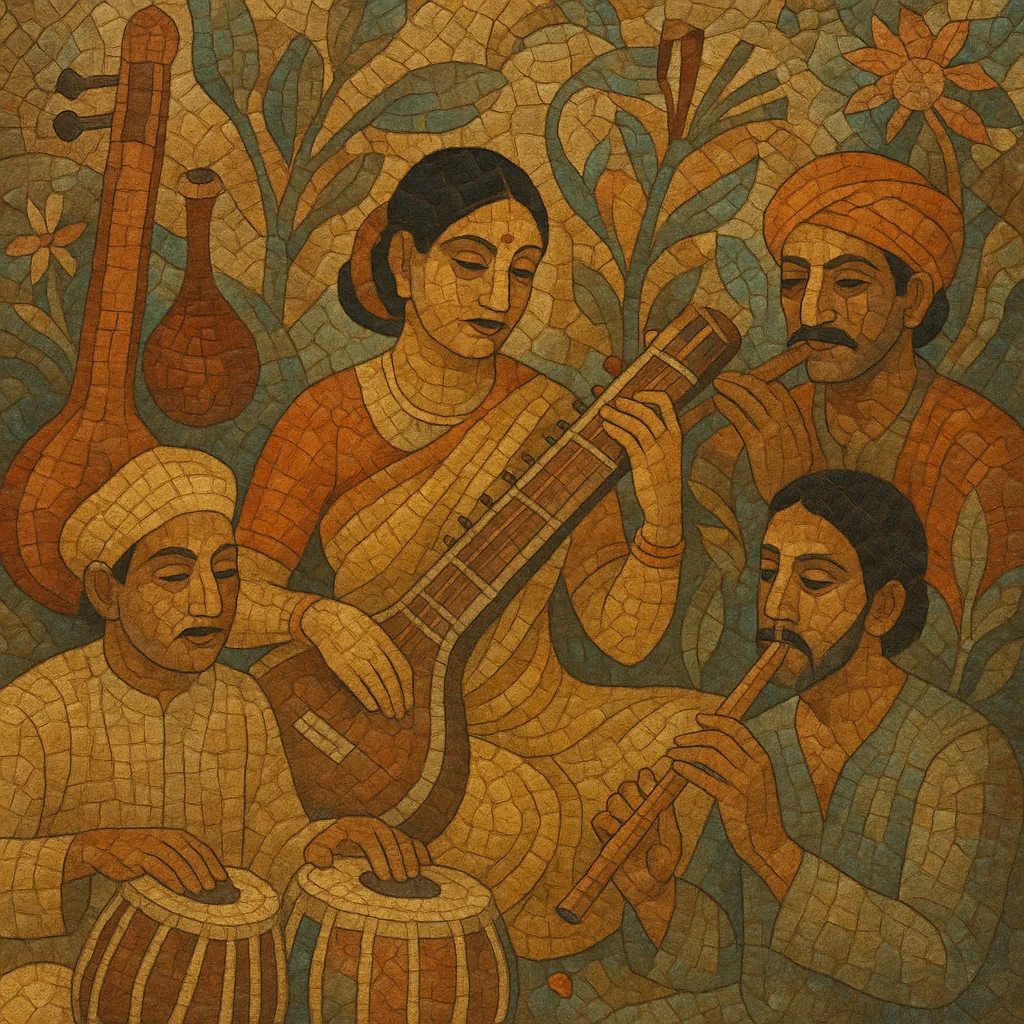Indian classical music is a millennia-old art tradition rooted in raga (melodic framework) and tala (rhythmic cycle), emphasizing improvisation within codified rules. It is fundamentally a vocal-centric music that uses a sustained drone (typically from a tanpura) as the tonal center, microtonal inflections (shruti), and elaborate ornamentations (gamakas).
The tradition is commonly understood through two major streams: Hindustani (North Indian) and Carnatic (South Indian). Both share ancient foundations yet diverge in repertoire, performance structure, and stylistic aesthetics. Typical instruments include sitar, sarod, sarangi, bansuri, shehnai, tabla, and harmonium in Hindustani; and veena, violin, venu (flute), mridangam, kanjira, and ghatam in Carnatic. Performances explore mood (rasa), time-of-day and seasonal associations of ragas, and the intricate interplay between soloist and percussionist.
Indian classical music traces its conceptual roots to Vedic chant and early treatises such as the Nāṭya Śāstra (c. 200 BCE–200 CE). By the 1200s, the Sangeet Ratnakara synthesized earlier knowledge and became a pivotal reference, documenting rāga, tāla, and performance practice before regional styles fully diverged.
Between the late medieval and early modern periods, regional, linguistic, and courtly contexts led to the emergence of Hindustani (North) and Carnatic (South) traditions. Hindustani absorbed Turko-Persian courtly influences under the Sultanates and Mughals, nurturing forms like dhrupad, khayal, and thumri. Carnatic music consolidated temple, devotional, and courtly practices in the South, with the 18th–19th century “Trinity” (Tyagaraja, Muthuswami Dikshitar, Syama Sastri) codifying a vast kriti and varnam repertoire.
The 20th century brought recordings, radio (All India Radio), formal institutions, and global concert circuits. Gurus and gharanas (Hindustani) and bani/parampara (Carnatic) preserved lineages while expanding reach. Virtuosi such as Ravi Shankar and Ali Akbar Khan popularized the music internationally, catalyzing Indo-jazz experiments and influencing Western minimalism and psychedelic rock.
Today, Indian classical thrives in concerts, festivals, and conservatories worldwide. Artists balance canonical compositions with improvisation, collaborate across genres, and leverage digital pedagogy. Despite innovation, the core remains: raga-based melody, tala-driven rhythm, and a shared aesthetic of unfolding mood (rasa) over time.


